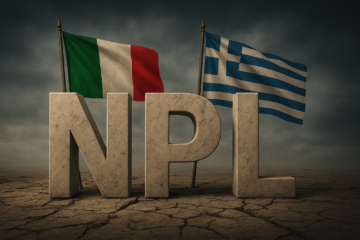Vivendi SA; Market Cap: €30.0bn as of 16/10/2015
In June 2015, Vivendi appointed Vincent Bolloré as the new Chairman of the Supervisory Board. Since then Vivendi has been under the spotlight as it set a different strategy focused on repositioning the group’s activity in Europe and re-entering the telecom and gaming industries. Specifically, Vivendi has recently increased its stake in Telecom Italia from 14.9% to 19.9%, a move that not only raises concerns for the possibility of a takeover on the leading Italian telecommunication company but that also seems controversial regarding Vivendi’s previous attempt to become a pure content group. In the last two years, in fact, the media giant has tried to sell off most of its telecom assets, among which Maroc Telecom, SFR and GVT (Brazilian telecom unit). And yet, Vivendi continues to surprise the market with this week’s acquisition of 6.6% of Ubisoft and 6.2% of Gameloft. This means that the company is betting again on the gaming industry, after having left the sector with its sale of Activision Blizzard in 2013.
Group description
Vivendi SA, formerly known as Vivendi Universal, is a French-based multinational group that operates in the content and media sector. Vivendi is currently active in four major segments: music, television and film, tickets and video hosting services. The French giant operates through four of its subsidiaries: (i) Canal+ Group is a leading Pay-TV group in France. It also offers its products in French speaking countries like Africa, Poland and Vietnam. Its subsidiary Studiocanal is a major European player in the acquisition, production, sales and distribution of TV series and films; (ii) Universal Music Group is the well-known leading music group engaged in music publishing and merchandising, with approximately 50 labels covering all genres and 30% of the global music producer market; (iii) Village Vivendi brings together Vivendi Ticketing (Tickets and Digitick), MyBestPro (expert counselling), Watchever (subscription video-on-demand) and L’Olympia (Paris concert hall); (iv) Dailymotion is a French video-sharing website, of which Vivendi owns a 80% stake.The shareholding structure of Vivendi has been historically variable and currently sees among its biggest investors the holding controlled by Bolloré with 14.4%, but also Blackrock, Amundi and other institutional investors, all with stakes below 5%.
Vivendi: a history of acquisitions
Vivendi was founded in 1853 and started as a water provider in Lyon, Nantes, Paris and Venice under the name of Compagnie Générale des Eaux (CGE). Since then the group has gone through many transformations with a rich history of acquisitions and restructurings.
From the beginning of 1980 the group pursued a diversification in many businesses such as energy, waste management, construction, media and telecommunication. In particular, the group created Canal+ (1983), took control of Société Générale d’Entreprise (SGE, now Vinci) and created Cegetel (1996), which owned stakes in SFR. These acquisitions mark a significant change in CGE’s strategy toward the industry of TMT, to which this group will remain historically linked.
Following twenty years of M&A transactions, the group accepted its transformation and was renamed as Vivendi. In 2000, after spinning-off its water and waste divisions, the group increased its international presence and merged its media empire with Seagram Company, at that time owner of Universal Studios, to become Vivendi Universal (VU) listed on the NYSE. Following the IPO, Vivendi Universal reorganized itself in different holdings: VU Publishing, VU Games, VU Entertainment, VU Net, Vivendi Communication, Vivendi Environment and Vivendi Music.
Nevertheless, the TMT behemoth, strongly hit by the Internet crisis, suddenly stopped growing in 2002, disclosing a net loss of €23bn. As a consequence VU started divesting, being forced to shed its non-core assets in its pursuit of liquidity and restructuring of its financial debt. The group abandoned stakes in Vivendi Environment (now Veolia), VU Publishing and Vinci. In 2004, Vivendi also sold 80% of VU Entertainement, renamed NBC Universal, to General Electric for €14bn.
VU was finally renamed as Vivendi in 2006, and increased its presence in media and telecommunications: it acquired, among others, Activision Blizzard (2008), GVT (2009), the remaining stakes in SFR (2011) and EMI Recorder Music (2012). Nevertheless, after few years, Vivendi was also involved in many cessions as a result of strategic review: in 2013 it sold Maroc Telecom to Etilasat and its majority stake in Activision Blizzard to the same gaming company in an attempt to become independent. Moreover, in 2014 Vivendi sold GVT to Telefónica for a deal estimated at €7.5bn and also sold its remaining stake in SFR to Altice. These divested assets, being considered as part of Vivendi’s core business, helped cutting down the group’s debt and provided a significant firepower for future acquisitions.
2015: a new strategy for the group
After years of fierce divestments, 2015 seemed as a turning point for Vivendi. In April, the group announced its acquisition of the Youtube rival Dailymotion, by purchasing a 80% stake for €217m. This could trigger a new digital strategy for the French giant but is still integrated in the objective of being the leader of content provider. Dailymotion now has access to a wide range of “premium” content from films and TV shows to official music videos. What is more, Vivendi can target the 128m monthly visitors of Dailymotion in an attempt to secure a completely new customer base for its content distribution. Finally, in June 2015, the group started increasing its stake in Telecom Italia and announced the acquisition of stakes in the French companies Gameloft (6.2%) and Ubisoft (6.6%). Although these two transactions look somewhat unusual after the company has divested such a profitable videogame developer as Activision Blizzard, a potential explanation is that Vivendi is still interested in the gaming industry but now prefers to shift its presence from US to Europe.
Vivendi and Telecom
Among the mentioned movements on the market, increasing the stake in Telecom Italia has been the most eye-catching one. The story began in September 2014 when Vivendi gained an 8.3% stake from the Spanish operator Telefónica as part of the remuneration for the French group’s disposal of the Brazilian telecom unit GVT. Since then Vivendi has constantly increased its stake, also exploiting the gradual exit of Telco, the holding group controlled by Telefónica, Generali, Intesa Sanpaolo and Mediobanca which was the former biggest investor in TI with 22% of the equity. Finally, after the sale of several assets (including its remaining 20% stake in French telecom operator Numericable-SFR to Altice for €3.9bn), Vivendi accumulated a significant cash pile that it has recently used to increase its stake in the leading Italian telecom operator. In early September it brought its stake to 15.5% and last week it further increased its investment, ending up with 19.9% of Telecom Italia’s equity.
Vivendi is now the reference shareholder of Telecom Italia. Many are asking what the main driver of this acquisition is and what will be the next move of the French giant.
A potential reason behind the increase in stake could be strategic: Vivendi could exploit Telecom Italia’s customer base (over 150m people worldwide) and its infrastructure (the biggest and most developed in Italy) as it seeks to secure new distribution channels for its video and music products. And the strategic rationale also seems supported by the group as Vivendi mentioned in an official statement that “this new investment confirms our intention to support the telecoms group over the long term and to develop our activities in southern Europe”. Under this scenario the possibility of a takeover is not excluded also because last year Italy lowered the threshold for a mandatory takeover offer to 25% from 30% for companies with a market capitalization of more than €500m and revenues above €300m (i.e. for companies like Vivendi). Nevertheless, concerns about the feasibility of a takeover are raised by the complex structure of the two companies that would create obstacles for a strategy of vertical integration, as well as by the political pressure that would arise from such acquisition.
In fact, beyond securing new distribution channels, the most important motivation for increasing the stake seems to be opportunistic. In particular Vivendi could not only exploit a short-term gain due to the potential rise of TI’s stock price (that now trades at discount compared to a few months ago), but could also have a medium-long term advantage in the perspective of consolidation of the telecommunication business in Europe. In that case, holding a significant stake in what would be a potential target for a takeover (from telecom operators like Telefónica or Orange) could put Vivendi in the charming position of asking a significant premium for the sale of the biggest stake in the leading Italian telecommunications company.
[edmc id= 3029]Download as PDF[/edmc]



1 Comment
3 Italia Finally Listening to The WIND of Change: Sparks of Consolidation in the European Telecom Industry : BSIC | Bocconi Students Investment Club · 25 September 2016 at 14:38
[…] steps towards a consolidation of the European telecom industry, not only in terms of geography (see Vivendi-Telecom Italia for example) but also in terms of product range offered to clients. As BSIC outlined in a previous […]